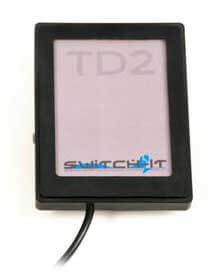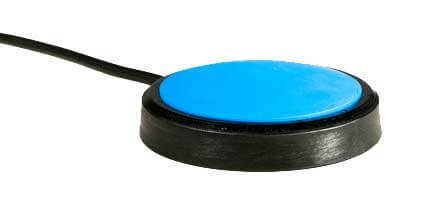In our previous two blog posts we reviewed the primary differences between proportional & non-proportional drive controls and took a deep dive into non-proportional drive controls. As we wrap up this series, our focus will be on the application of proportional drive controls and examples of several types available today.
Before we begin talking about the different types of proportional drive controls, I'd like you to do a little guided visualization exercise with me. Take a deep breath and try to clear your mind. Picture a young man driving down a hallway heading to the cafeteria in a power wheelchair. What body part is he using to drive the wheelchair? What does the drive control device look like? As he approaches the cafeteria door, what stands out about how he maneuvers through the doorway? Keep the image in your head and take one more deep breath. Great! Our guided visualization is over.
If I had to wager a guess, I would say the majority of readers pictured the young man driving a power wheelchair with a standard joystick mounted off his right armrest with his right hand. As the young man approached the doorway, you imagined him slowing down while keeping his hand on the joystick with the chair still moving just enough to safely make it through the door. Was I close?
There are a few reasons why I am relatively confident in my guess. The most common drive control device used on a power wheelchair is a standard joystick, and the majority of joysticks are mounted off of one of the armrests (the majority of the population is right-handed, so I guessed off the right armrest). I deduced that the young man was able to slow down while driving the wheelchair because it's likely you pictured the joystick as a proportional system, which would allow him to make more precise maneuvers while driving in tight places.
Characteristics of a proportional drive system include:
- Generally, the provision of full directional control with a 360-degree circle.
- Provides the ability to grade speed similar to the way the gas pedal in a car does. The farther the input device is moved from its neutral position, the faster the wheelchair will move.
- Provides for more precise control than non-proportional devices by allowing the user to quickly increase or decrease speeds in all directions.
- Provides increased control for the user while navigating different environments and through various terrains.
- Requires the user to have the needed cognitive skills and motor function for the specific device, including the ability to voluntarily grade the amount of force applied to the input device.
As you may recall from our guided visualization exercise, it is safe to believe that the most common power wheelchair drive controls are standard proportional joysticks. There are a number of programming adaptations, equipment modifications, mounting options, and various other considerations to bear in mind when selecting a standard joystick for a client. Learn more about options for standard joysticks here.
There is also a wide variety of types of alternative drive controls that are also proportional, including:
Mini Proportional Joysticks
- Mini proportional joysticks are significantly smaller than standard joysticks.
- Commonly requires less force to activate and control.
- Offers mounting options so the joystick can be operated with various parts of the body including lips, chin, fingers, toes, etc.
- To learn more about two specific types of mini proportional joysticks and the real-life application of one, I encourage you to read this post written by our guest blogger and esteemed Sunrise Medical colleague Robert Norton, ATP.
Compact Joysticks
- Compact joysticks are similar in size to standard joysticks, yet the casing is much smaller and compact.
- Commonly very basic in operation. No screens or additional buttons for the operation of other functions.
- Some compact joysticks do allow for one or two switches to be plugged into them to be utilized for turning the chair on & off or switching modes.
Touch Drive Device

- A touch drive device operates similar to the way touchscreens on smart phones and tablets operate.
- No force is required; simply move extremity across the glass screen.
- Allows small, precise movements.
- Can be operated with different parts of the body as long as there is contact with skin.
Dual Pro® Head Array

- The Dual Pro® head array utilizes both proximity and force switches, transforming the system into a fully proportional head array.
- Proportional capabilities allow individuals who need to move their head in different directions to drive, to have the benefits of proportional control.
Individual Proportional Switches

- Individual proportional switches are developed with the same technology as the fully proportional Dual Pro head array.
- Allows for the user to use each individual switch controlling each direction in a way similar to the gas pedal in a car; the harder the switch is pushed, the faster it will go.
- This type of system can be utilized to bridge the gap when teaching a client to go from driving with non-proportional switches to a proportional joystick.
Identifying the most appropriate drive control device for an individual to use with a power wheelchair that will allow for the greatest level of independence and safety is not easy. It is vital that you work with a team of qualified and experienced complex rehabilitation technology (CRT) professionals to determine the best option for your clients. In addition, provide the user with the opportunity to experiment with using different types of devices. Keep in mind that learning to drive a power wheelchair, no matter what the drive control device is, takes time.
Thank you for reading our blog! We love hearing from you, so please do not hesitate to reach out to us. We encourage you to leave a comment below.
Always remember at the end of the day, your client is your number one priority!
- Angie
Follow Angie on Twitter @ATigerKiger